Bitcoin price today: dips below $112k, near 6-wk low despite Fed cut bets
Introduction & Market Context
Tribe Property Technologies Inc (TSXV:TRBE) presented its Q1 2025 financial results on May 29, 2025, highlighting significant growth and continued progress toward sustainable profitability. The company, which provides tech-enabled property management solutions, reported strong performance amid increasing demand for digital property management services in Canada.
Trading at C$0.54 as of June 12, 2025, Tribe’s stock has shown resilience, with a 52-week range of C$0.30 to C$0.63. The company continues to capitalize on several key market trends, including increased activity in the rental market, growing demand for data-driven property management, and a persistent housing shortage that drives long-term growth in managed properties.
Quarterly Performance Highlights
Tribe reported revenue of $8.0 million for Q1 2025, representing a 49% increase compared to Q1 2024. While this marks substantial growth, it fell slightly short of analyst expectations of $8.14 million. More significantly, the company achieved positive Adjusted EBITDA of $322,000, marking the second consecutive quarter of positive results and a remarkable 124% improvement from the negative $1.36 million reported in Q1 2024.
As shown in the following financial highlights comparison:
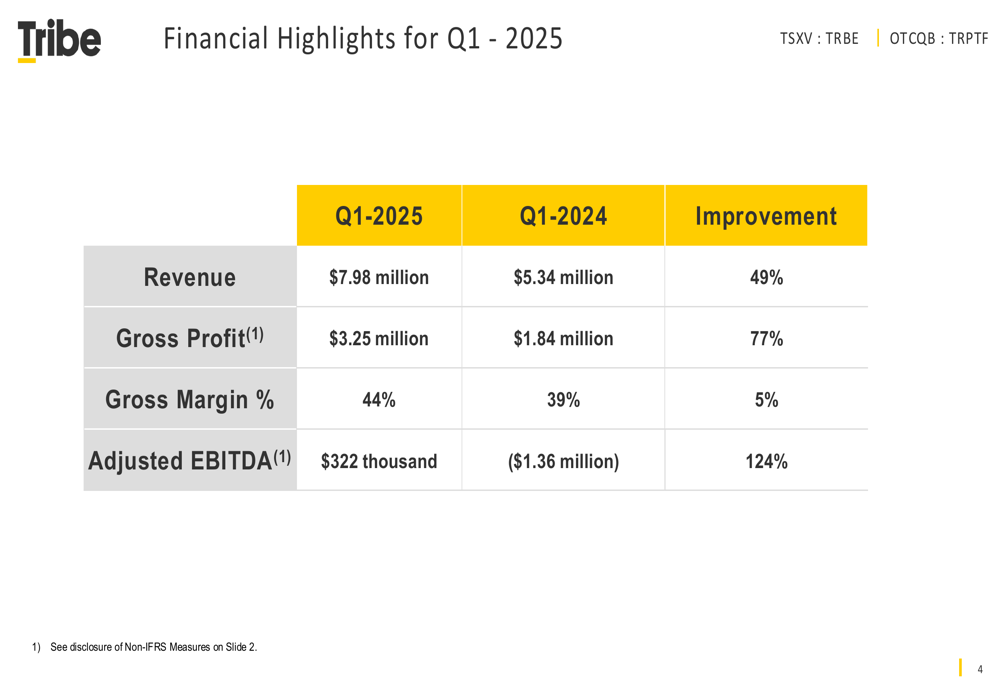
Gross profit saw an even more impressive 77% year-over-year improvement, reaching $3.25 million compared to $1.84 million in Q1 2024. The gross margin percentage improved to 44%, up from 39% in the prior year, demonstrating enhanced operational efficiency and economies of scale.
The company also successfully closed a $1.1 million non-brokered private placement during the quarter, strengthening its financial position for future growth initiatives.
Revenue Growth and Segmentation
Tribe’s consistent revenue growth trajectory is evident in its multi-year performance. The company has maintained a 5-year compound annual growth rate (CAGR) of 58% from 2020 to 2024, driven by strategic acquisitions, organic growth in new markets, and increasing demand for its technology solutions.
As illustrated in the following revenue growth chart:
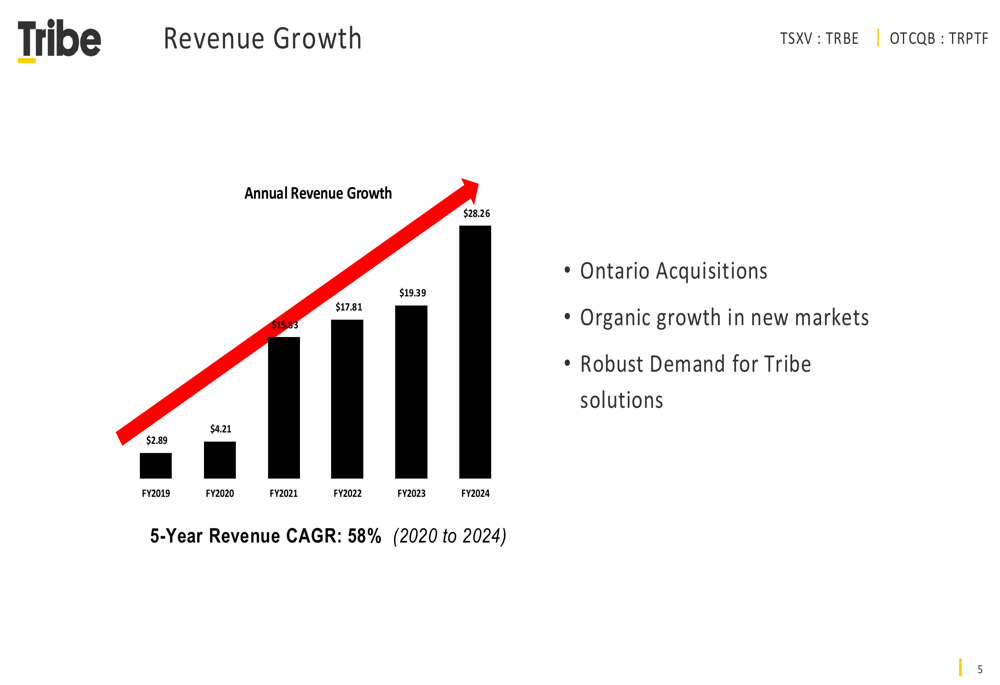
The company’s revenue is divided into two primary segments: Recurring Revenue and Transactional Revenue. Recurring Revenue, which includes tech-elevated management services fees for various property types, reached $6.4 million in Q1 2025, a 42% year-over-year increase, and represented 80% of total revenue. This stable revenue base provides predictability and forms the foundation of Tribe’s business model.
Transactional Revenue, derived from software licensing, data reporting, banking services, and other value-added offerings, grew even more rapidly at 89% year-over-year to reach $1.6 million, accounting for 20% of total revenue. This segment represents a significant growth opportunity as Tribe expands its digital marketplace offerings.
The breakdown of these revenue streams is shown here:
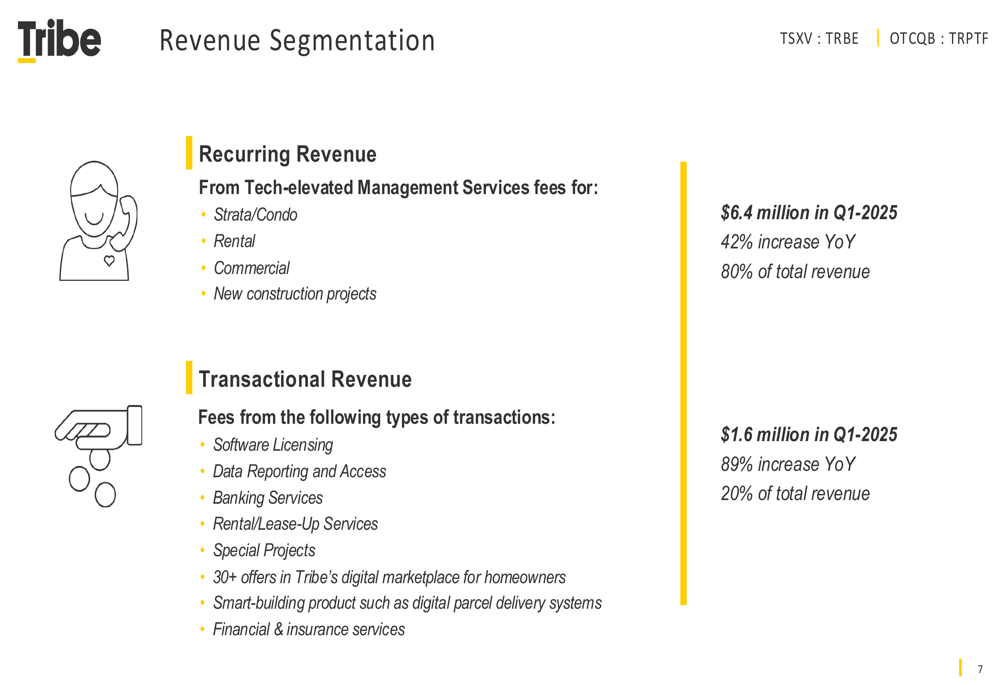
Path to Profitability
One of the most significant achievements highlighted in Tribe’s presentation is the company’s transition to profitability. After several quarters of negative EBITDA, Tribe has now delivered two consecutive quarters of positive Adjusted EBITDA, demonstrating the success of its operational efficiency initiatives.
The following chart illustrates this important inflection point:
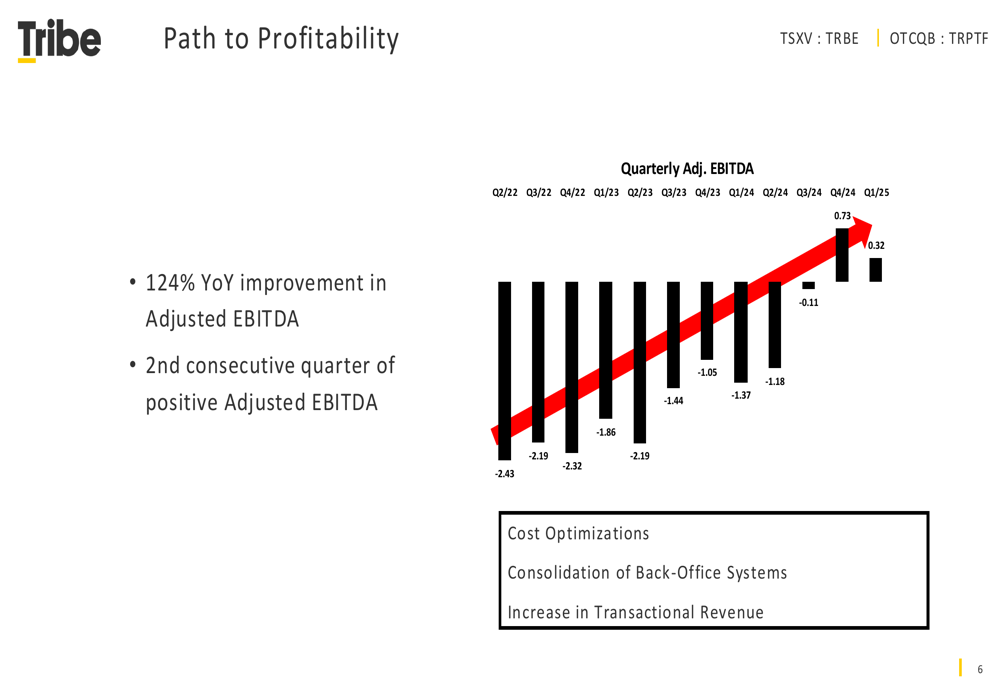
This improvement has been driven by several factors, including cost optimizations, consolidation of back-office systems following acquisitions, and increasing transactional revenue which typically carries higher margins. The trend reflects management’s strategic shift from prioritizing growth at all costs to building a sustainable and profitable business model while maintaining strong revenue expansion.
Strategic Initiatives and Acquisitions
A key component of Tribe’s growth strategy is its disciplined acquisition approach. Subsequent to the quarter end, the company announced an agreement to acquire Ace Agencies, a Greater Vancouver single-unit rental property management firm. This acquisition will add approximately 900 homes to Tribe’s portfolio, increasing its single-unit rental portfolio by 275%.
The strategic rationale for this acquisition is outlined here:

Ace Agencies generated over $1.4 million in revenue in 2024 with positive EBITDA, making it immediately accretive to Tribe’s financial results. The acquisition aligns with Tribe’s vision to become a full-service, national property management solution and strengthens its position in the high-margin single-unit rental market.
Tribe’s acquisition growth model follows a systematic approach:
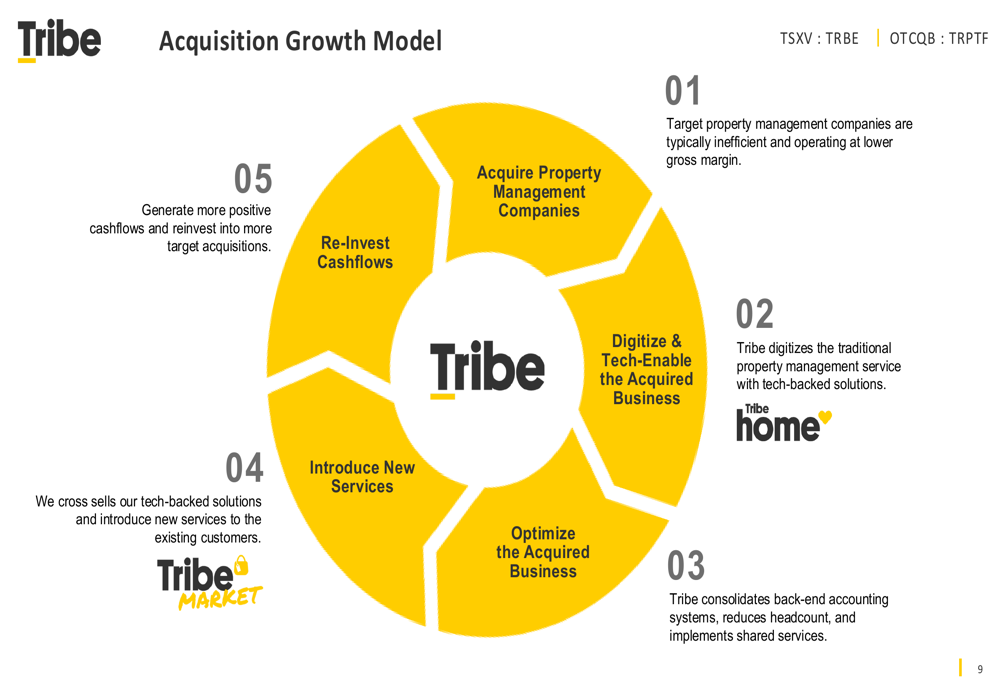
This model enables Tribe to transform traditional property management companies through technology integration, operational optimization, and introduction of new digital services, ultimately generating improved cash flows that can be reinvested into further acquisitions.
Forward-Looking Statements
Looking ahead to the remainder of 2025, Tribe outlined three primary growth strategies: increasing organic growth, executing on its M&A strategy, and continuing to innovate its technology platform.
The company’s growth outlook is summarized here:
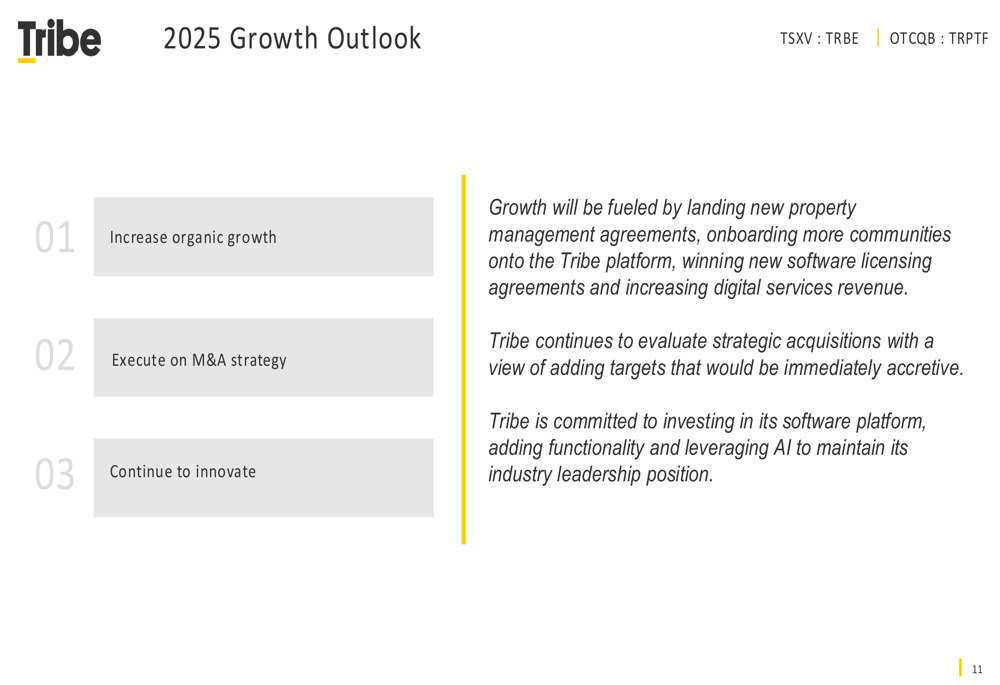
Tribe expects to fuel organic growth by landing new property management agreements, onboarding more communities onto its platform, securing new software licensing agreements, and increasing digital services revenue. The company continues to evaluate strategic acquisition targets that would be immediately accretive, while also investing in its software platform to maintain its competitive edge.
Key market trends supporting Tribe’s growth outlook include a ’Buy Canadian’ sentiment, the recession-resistant nature of property management, increased activity in the rental market, growing demand for data-driven property management, and the persistent housing shortage as a long-term growth driver.
With its improved financial position, strategic acquisition strategy, and focus on technology-enabled property management, Tribe appears well-positioned to continue its growth trajectory while building on its newfound profitability in the coming quarters.
Full presentation:
This article was generated with the support of AI and reviewed by an editor. For more information see our T&C.
